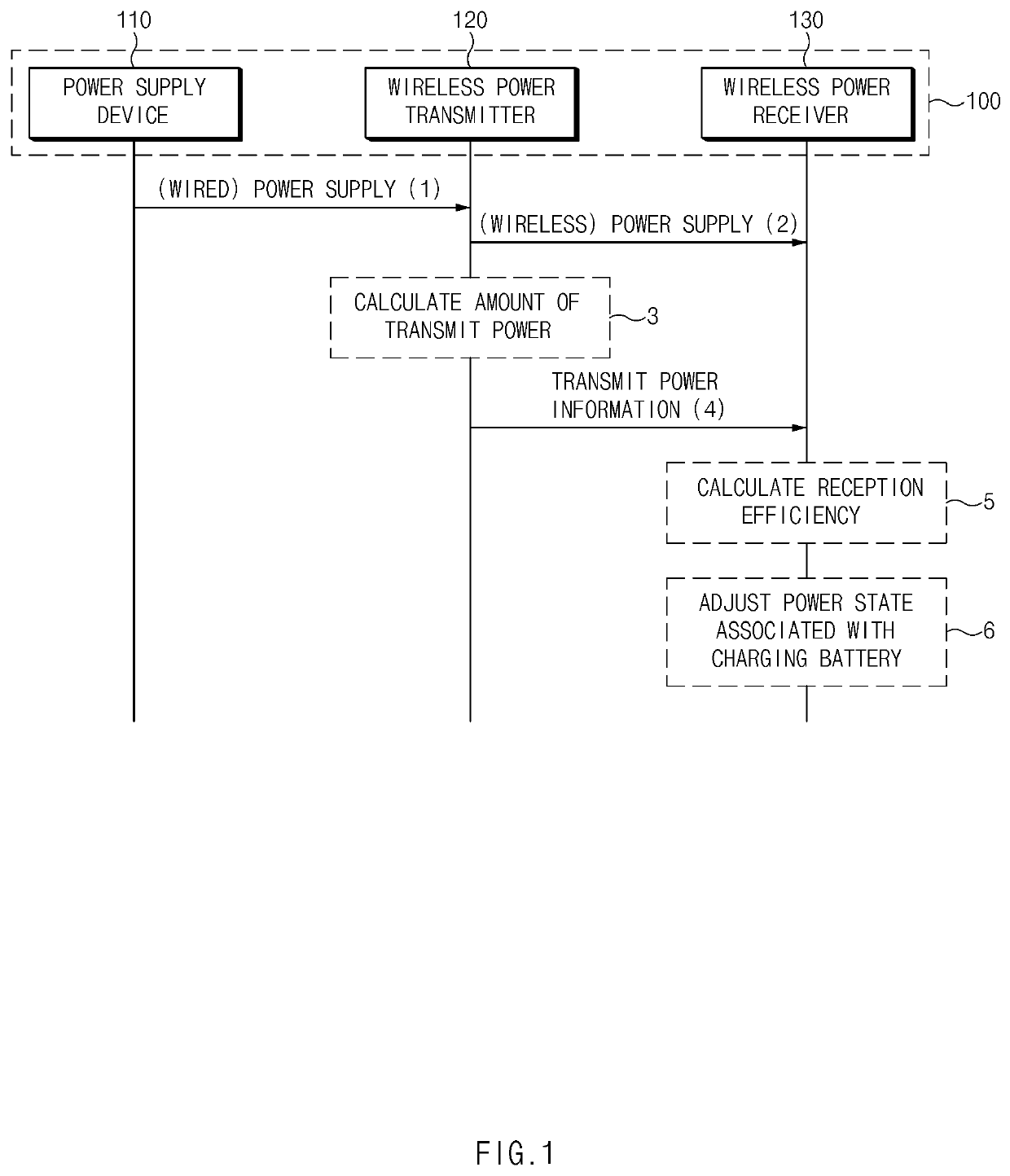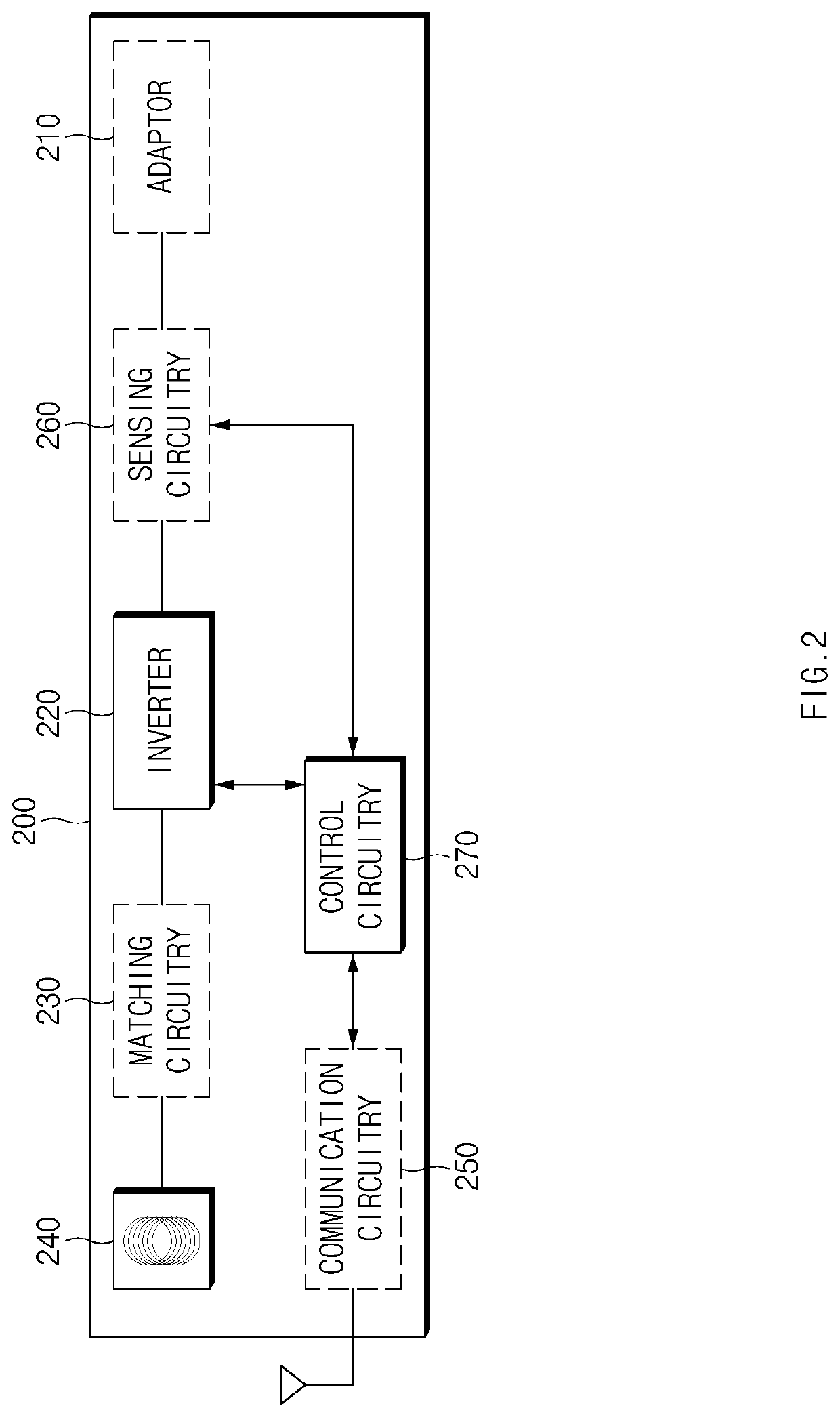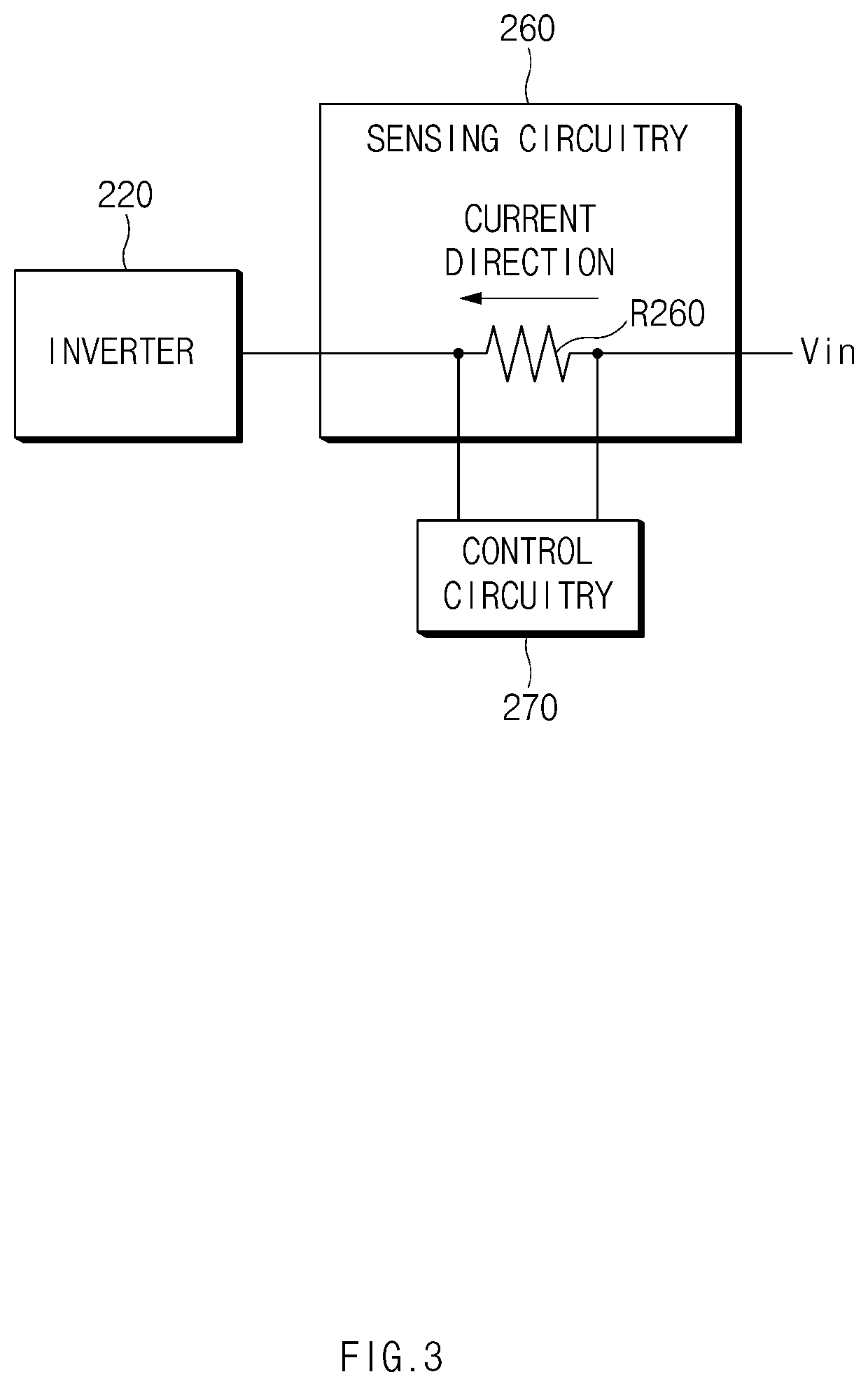Apparatus for transmitting and receiving information about amount of power for identifying transmission efficiency associated with wireless power transfer and control method therefor
a technology of wireless transmission and information about the amount of power, applied in the direction of battery data exchange, exchanging data chargers, transportation and packaging, etc., can solve the problem of failure to perform power control based on transmission efficiency, and achieve the effect of accurate transmission efficiency
- Summary
- Abstract
- Description
- Claims
- Application Information
AI Technical Summary
Benefits of technology
Problems solved by technology
Method used
Image
Examples
Embodiment Construction
[0028]Various embodiments of the disclosure will now be described in detail with reference to the accompanying drawings. In the following description, specific details such as detailed configuration and components are merely provided to assist the overall understanding of these embodiments. Therefore, it should be apparent to those skilled in the art that various changes and modifications of the embodiments described herein can be made without departing from the scope and spirit of the disclosure. In addition, descriptions of well-known functions and constructions are omitted for clarity and conciseness.
[0029]FIG. 1 is a signal sequence diagram illustrating an operational flow of a wireless power transfer system, according to an embodiment.
[0030]Referring to FIG. 1, a wireless power transfer system 100 includes a power supply device 110, a wireless power transmitter 120, and a wireless power receiver 130.
[0031]When receiving AC power (e.g., about 220 V) from an AC power source, in o...
PUM
 Login to View More
Login to View More Abstract
Description
Claims
Application Information
 Login to View More
Login to View More - R&D
- Intellectual Property
- Life Sciences
- Materials
- Tech Scout
- Unparalleled Data Quality
- Higher Quality Content
- 60% Fewer Hallucinations
Browse by: Latest US Patents, China's latest patents, Technical Efficacy Thesaurus, Application Domain, Technology Topic, Popular Technical Reports.
© 2025 PatSnap. All rights reserved.Legal|Privacy policy|Modern Slavery Act Transparency Statement|Sitemap|About US| Contact US: help@patsnap.com



